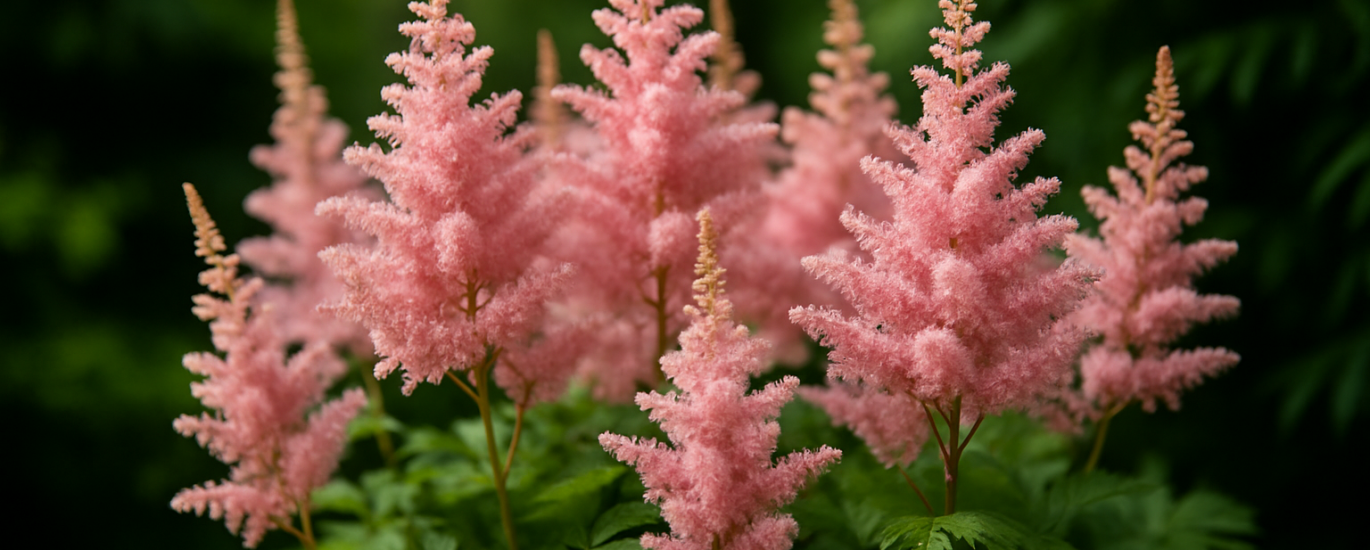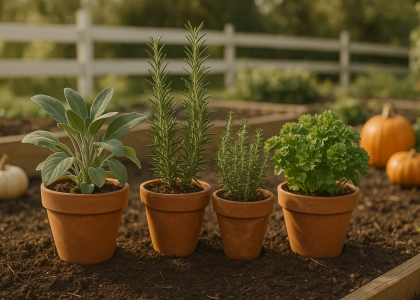Shady gardens don’t have to be dull. With Astilbe, you can bring feathery blooms of pink, white, or red into corners where most flowers refuse to shine. This shade-loving perennial thrives alongside hostas and ferns, making it a must-have for anyone designing a lush, balanced garden retreat.
Appearance & Features
- Plume-like flower spikes: Tall, airy clusters that sway gracefully in summer breezes.
- Color range: From soft whites to pastel pinks and deep crimson reds.
- Lacy foliage: Fern-like green leaves add texture, even when not in bloom.
- Height & spread: Most varieties grow 18–36 inches tall, forming neat clumps.
Why gardeners love it: Astilbe flowers look like delicate feathers, softening shady spaces with a romantic glow.
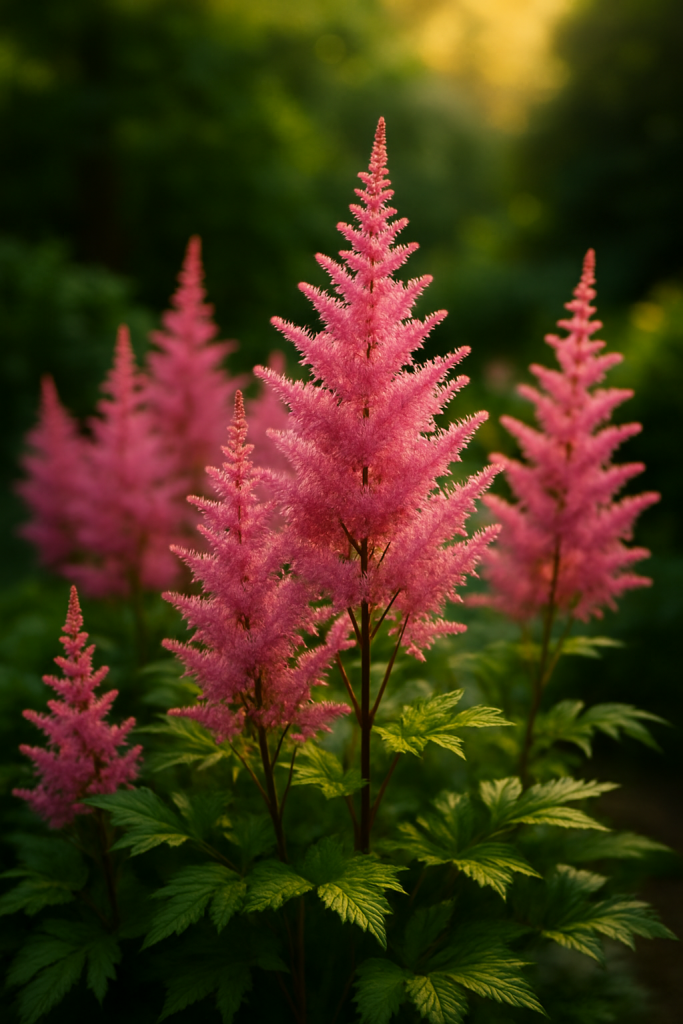
Growing Conditions
Astilbe is a shade perennial that loves consistent moisture and protection from harsh sun.
- Light: Partial to full shade; morning light is fine.
- Soil: Rich, humus-heavy soil that stays evenly moist.
- Moisture: Astilbes dislike drought — mulch around plants to lock in moisture.
- Spacing: Plant 18–24 inches apart for an even, colorful display.
Pro Tip: Plant near water features or in naturally damp garden corners — they’ll reward you with fuller, longer blooms.
Flowering & Seasonal Care
- Blooming period: Summer (June–July for most varieties).
- Deadheading: Cut spent blooms to encourage tidy foliage and sometimes a light rebloom.
- Foliage care: Leaves remain attractive through summer and into fall.
- Winter prep: After frost, cut stems back to ground level and mulch for protection.
Garden Companions & Design Ideas
Astilbes are perfect team players in shady corners. Pair them with:
- Hostas → Their bold, textured leaves contrast beautifully with Astilbe’s plumes.
- Ferns → Add layered greenery and softness.
- Heuchera (Coral Bells) → Extra pops of foliage color.
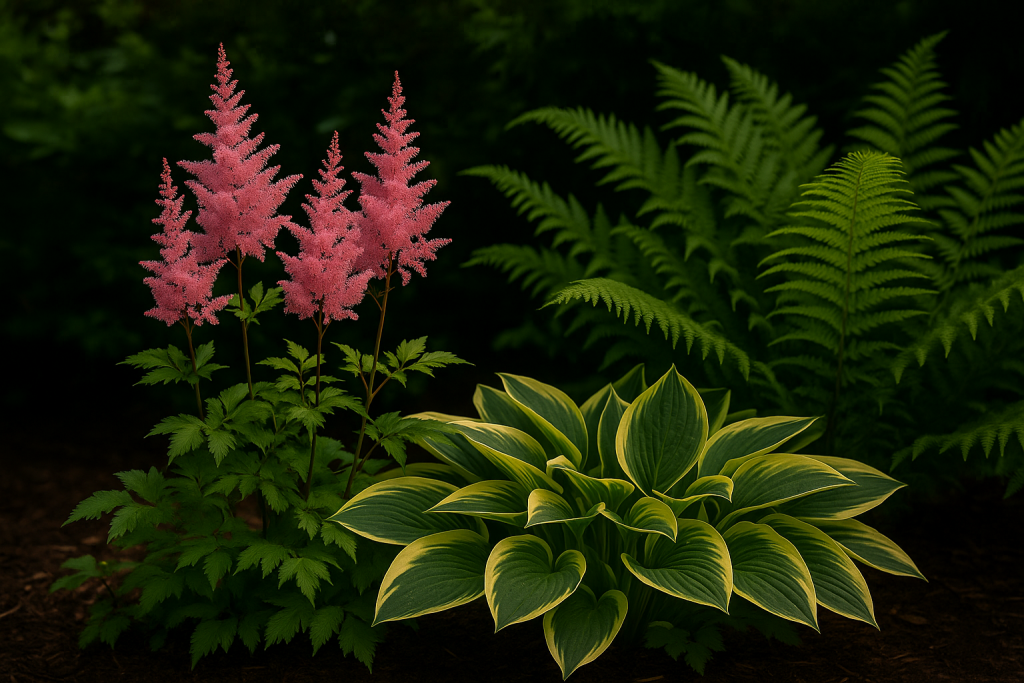
Home & Aesthetic Uses
Astilbes bring a romantic, painterly feel to spaces where color is rare:
- Balcony planters: Use long wooden boxes with ferns and hostas.
- Cottage-style flower beds: Mass Astilbes in clusters for a soft color gradient.
- Shady walkways: Line paths with Astilbes to create a glowing border in summer.
Imagine this: A shaded balcony corner bursting with soft pink Astilbes, lacy ferns, and deep green hostas — a mini sanctuary of color.
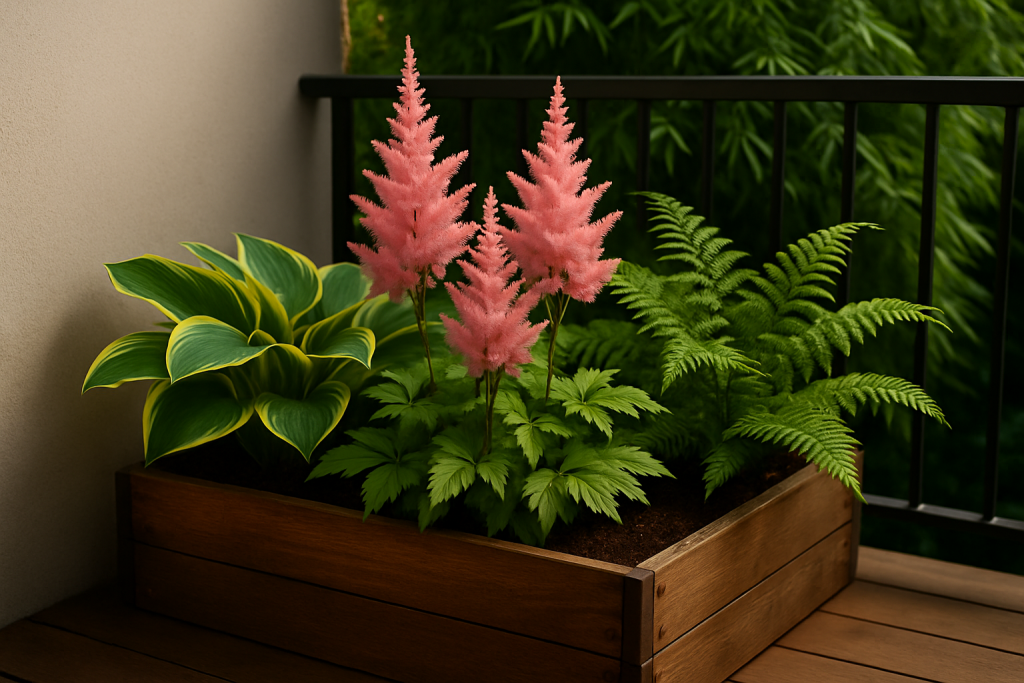
Conclusion
If you’re looking for a low-maintenance perennial that transforms shade into a canvas of color, Astilbe is your go-to. With proper moisture and shade, these plume-like blooms create an atmosphere of calm and beauty.
Save this guide & try Astilbe in your next shady garden project.

